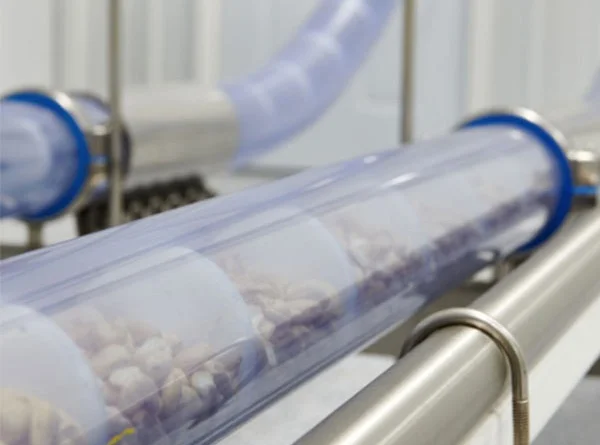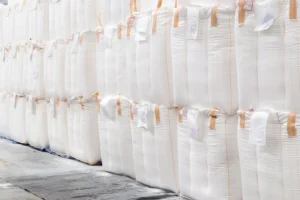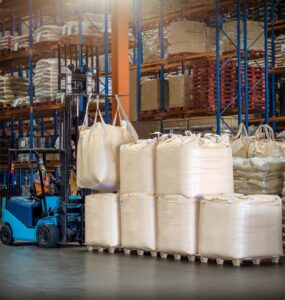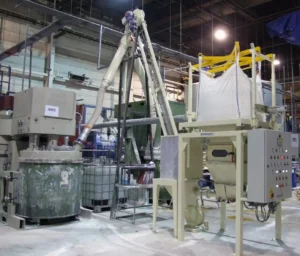In any manufacturing setup, choosing the right type of conveyor system is crucial in maintaining efficiency and streamlining operations. If you find yourself at this crossroads, a comparison between cable vs. chain drag conveyors is an excellent starting point for making an informed decision. These two conveyor types, while similar in function, have distinct features and benefits that cater to different needs in material handling.
Which drag conveyors are best? Should I go with a tubular chain drag conveyor or a tubular cable drag conveyor? If these questions are on your mind, we can help. At Spiroflow, we have more than 45 years of experience in the dry bulk material handling industry, and we make both types of drag conveyors. However, keep in mind that this article will only discuss chain drag conveyors that operate within a tube. We consider these heavy-duty chain drag conveyors.
Cable vs. Chain Drag Conveyors – Similarities
Let’s start by explaining how these two conveyor technologies have some similar features. What are the similarities between chain and cable drag conveyors?
Chain and cable drag conveyor solutions aren’t completely different. They share general features, including low energy consumption, and are both good with medium-volume applications. Both conveyor types are dust-free, enclosed, and hygienic, and they can maintain blends and convey fragile products gently. These conveyors both smoothly integrate with other bulk material handling equipment in a process.
Shared General Features
Drag conveyors, renowned for their efficacy in low and medium-volume applications, are capable of efficiently handling material loads ranging from 0 to 20 tons per hour. These conveyors stand out for their ability to run at variable conveying rates, allowing for a degree of flexibility depending on the specific requirements of a task at hand. Notably, they are characterized by low energy consumption, which not only reduces operational costs but also promotes a more environmentally friendly operation.
To cater to varying operational complexities, multiple conveyors can be linked together, enabling coverage over longer distances without compromising on functionality. Additionally, a crucial attribute common to both cable and chain drag conveyors is the auto-tensioning feature. This standardized addition plays a significant role in maximizing the lifespan of your cable or chain. This significantly optimizes the longevity and reliability of industrial conveyor systems.
Shared Functional Features
Understanding all shared functional features can help any manufacturer make the right decision when optimizing and improving their operations. Here are some shared characteristics that both cable and chain drag conveyors have:
- Enclosed system,
- Dust-tight,
- Hygienic design and construction,
- Explosion-proof versions are available,
- Gentle action,
- Multiple inlets and outlets,
- Multiple planes,
- Can elevate,
- Dust filtration is not required.
Bulk Materials Handled by Both
When it comes to handling various types of bulk materials, both cable and chain drag conveyors prove to be efficient. They are perfectly capable of handling dry products, preserving the quality and structure of even the most fragile items during transit. They also maintain the blends of different materials, ensuring that the mixture remains consistent throughout the conveying process.
Options Offered on Both Conveyors
When delving into the specifics of these conveyor systems, it’s vital to consider the various options that come with each conveyor. These options serve a wide array of needs and applications and enhance the functionality and versatility of your operations. Here are some of the options available on both conveyors:
- Tubes and chain in 316 Stainless Steel,
- Sanitary finish,
- Inlet support base,
- Corner sprockets (90° Idler Housing),
- Hinged access covers,
- Hinged inlet chute access covers,
- Inlet vibration – electric or pneumatic,
- Tube-mounted inlets,
- Tube-mounted outlets,
- Tube valve with chute (Pneumatically actuated inline discharge valve),
- Extended capacity chute with a dust hood, splash guard, and lid options,
- Manual or pneumatic inlet baffle,
- Rotation sensor (highly recommended),
- Air purge,
- Level probes – NEMA 4 or 7,
- Mobile base,
- Controls (with or without VFD),
- XP switch,
- Static grounding,
- 90° sweeps,
- Sweeps at custom angles.
Remember, the right selection of features can significantly enhance the longevity and performance of your conveyor system.
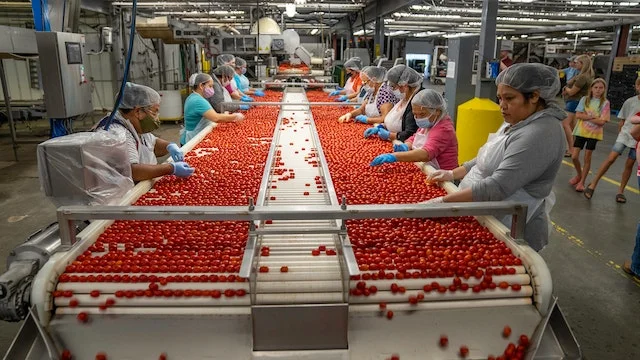
Cable vs. Chain Drag Conveyors – Differences
What are the differences between cable and drag chain conveyors? Cable and chain drag conveyors have very similar designs but different sprockets. A cable and disc assembly costs less than chain and disc assembly, meaning that cable drag conveyors have lower upfront capital costs.
Additionally, the higher run speed of a cable drag conveyor cuts down on costs by enabling processors to achieve the same conveying capacities with a smaller diameter conveyor. Chain conveyors, on the other hand, may last longer, meaning lower maintenance and replacement parts costs over time.
Cable Advantages
The cable and disc assembly costs less than the chain and disc assembly, which means this medium-duty conveyor that will have a lower capital cost. Our cable drag conveyor runs at higher speeds – up to 140 ft/min (43m/min), which is faster than the chain drag conveyor that runs at 100 ft/min (30m/min). Processors can, therefore, achieve the same conveying capacities using a smaller-diameter conveyor, which can yield a lower capital cost.
Chain Advantages
The heavy-duty chain drag conveyor is more robust and will last longer due to the strength of the chain compared to the strength of the cable. This translates to lower maintenance costs and minimal replacement parts purchases. The strength of the chain also makes it a logical choice for processors conveying higher-density or abrasive materials.
The maximum length of a single Chainflow conveyor is 500 ft – 25% longer than our Cablevey cable drag conveyor, which has a maximum length of 400 ft. Depending on layout constraints, processors may save money and streamline their layout by utilizing fewer conveyors.
The chain and disc assembly in a chain drag conveyor is crevice-free, which makes it ideal for hygienic applications in the food industry. The crevice-free surfaces make the chain and disc assembly easier to clean. It’s also easier to eliminate cross-contamination for processors conveying more than one type of material.
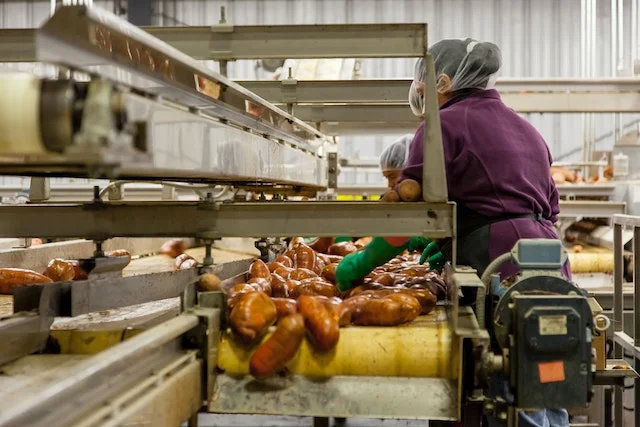
Use a Test Lab
Should my dry bulk material conveyor be tested with my specific material before I purchase the conveying equipment? No matter what route you take, we suggest you work with a specialist manufacturer that can test your material beforehand. We will gladly test your material in a cable or a chain drag conveyor because we want to make sure you are getting the best process equipment and the results you need. At Spiroflow, we help processors determine the right conveyor belt solutions for their applications every day. So, if you need some help or advice, contact us!

